Some birds imported from other continents escaped or were intentionally released. In fact, even birds from a different part of our own continent can become problematic for our own native birds.
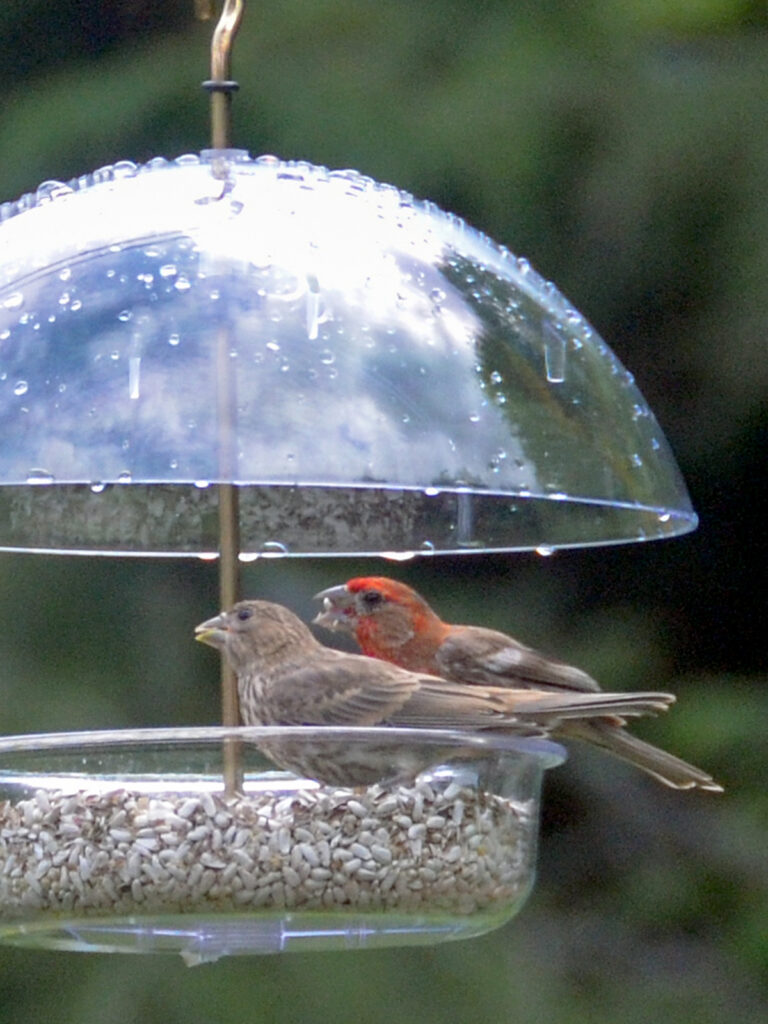
For example, these house finches, native to the US West, spread through the Northeast after being released in Long Island about 50 years ago.
I seldom see native purple finches. I’m not sure whether this is due to the large population of house finches or not, but I suspect they use habitat that native finches could use. (The house finch eye disease is another issue, though I don’t know if that is because they’re not native here.)
Pigeons are another non-native bird, but we seldom see them in our yard, even though we frequently see them just a few blocks from our home. I wonder if our natural landscape is not as appealing to them as more conventional sterile landscapes?
But the main invaders in our yard are house sparrows (pictured in the introductory photo) and European starlings.
House sparrows
UPDATE 2022: Interestingly, the house sparrow population in our yard has declined dramatically in the past few years. At times, in 2006 we had up to 90 house sparrows at a time; in 2017, our highest count was 60; in 2020, the count was 20; and in 2021 and 2022, we’ve generally had counts generally in the single digits! (And see the Resources section below for an article by Cool Green Science about this trend.)
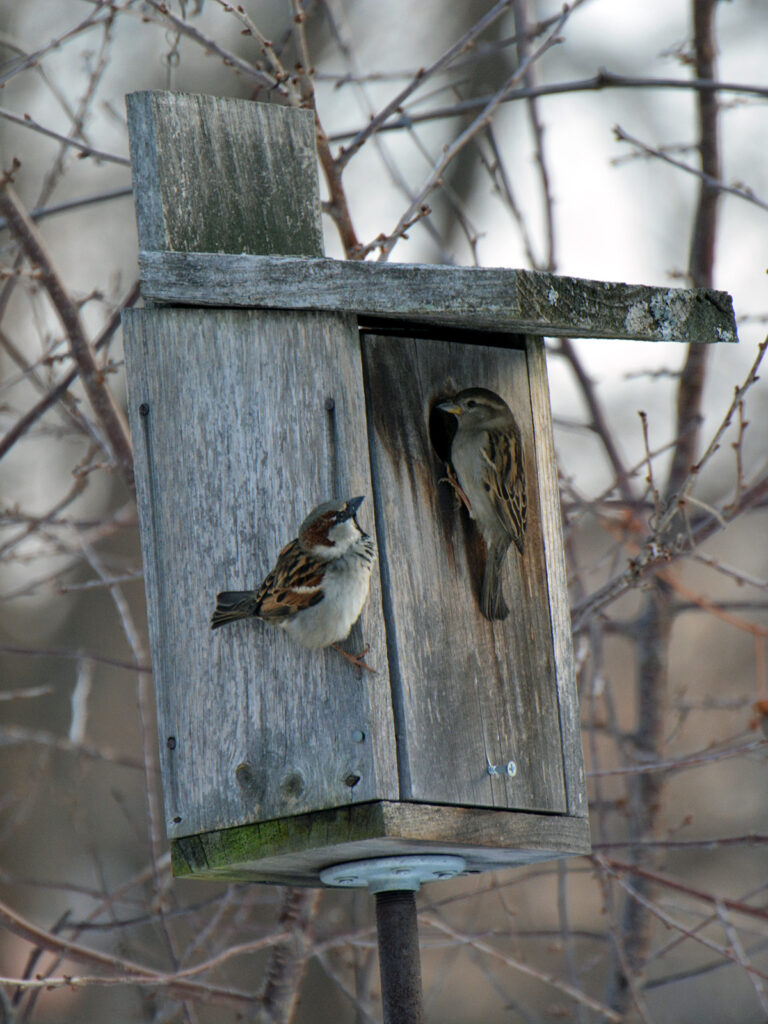
European house sparrows at times have been the worst animal invaders in my yard, especially because they’re here year-round.
One interesting fact is that they actually aren’t true sparrows at all. They’re weaver finches.
Large flocks of these birds can eat huge amounts of food, and they aggressively crowd out other birds. Even worse, they compete for nesting spaces and are usually the victors.
Interestingly, they do have one parasite: cowbirds, though they don’t impact the house sparrow population very much.
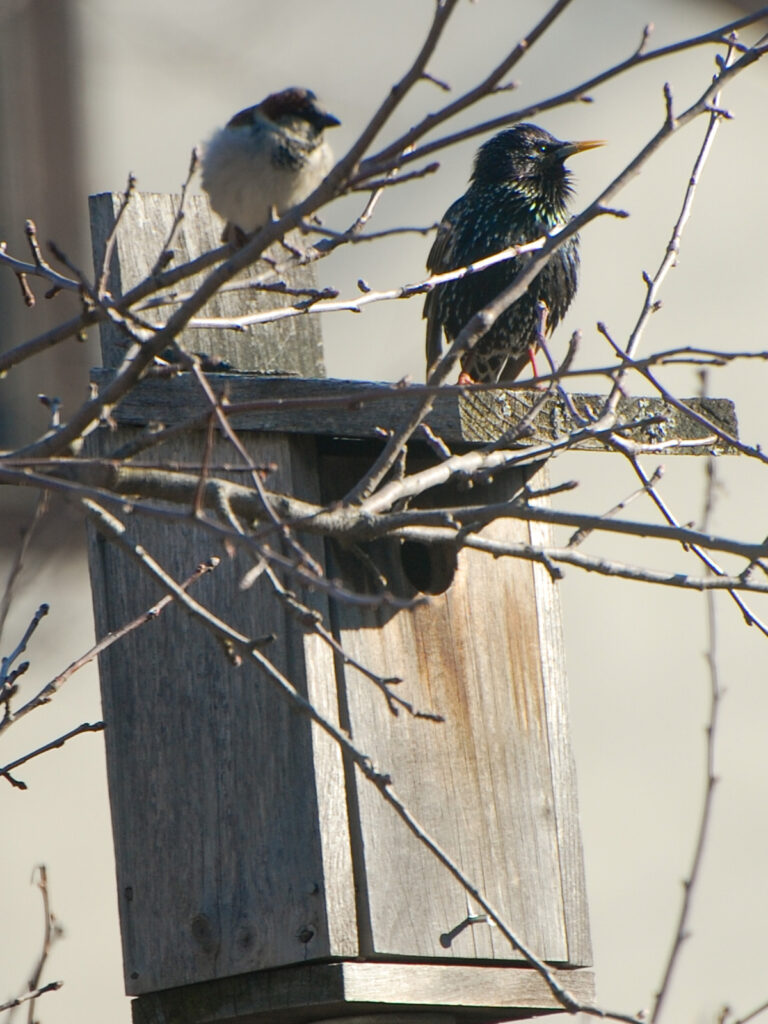
After harassing and displacing so many other native birds, this house sparrow is helpless to combat this non-native European starling when he tried to take over the house sparrow’s nest box.
This is what I call poetic justice!
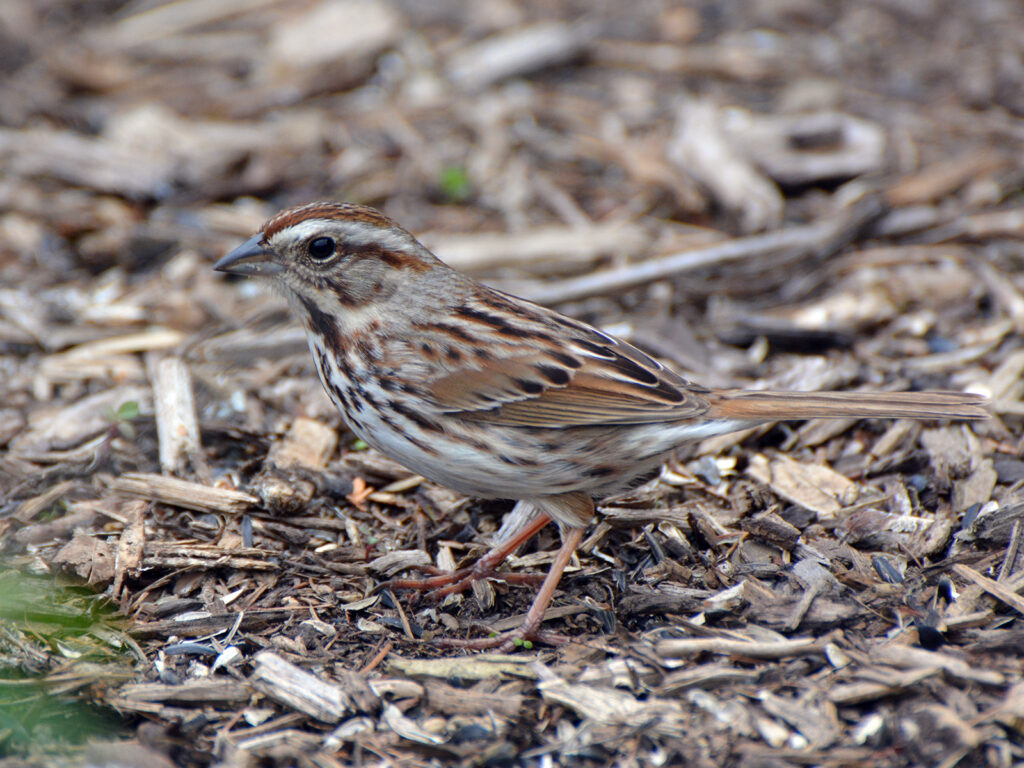
IMPORTANT: True sparrows, even though they tend to also be what are called “LBJs” (little brown jobs), are quite charming and often very beautiful once you learn to distinguish one from the other. Some of our favorites are white-throated sparrows, white-crowned sparrows, song sparrows (pictured), and chipping sparrows, among others.
As non-native birds, house sparrows aren’t legally protected so they can be eradicated, BUT it’s imperative that you can distinguish between house sparrows and native sparrows!
European starlings
Starlings are pretty aggressive and chase away other birds. Even worse, they tend to travel in large flocks and can strip the bushes bare, leaving little for our native birds.
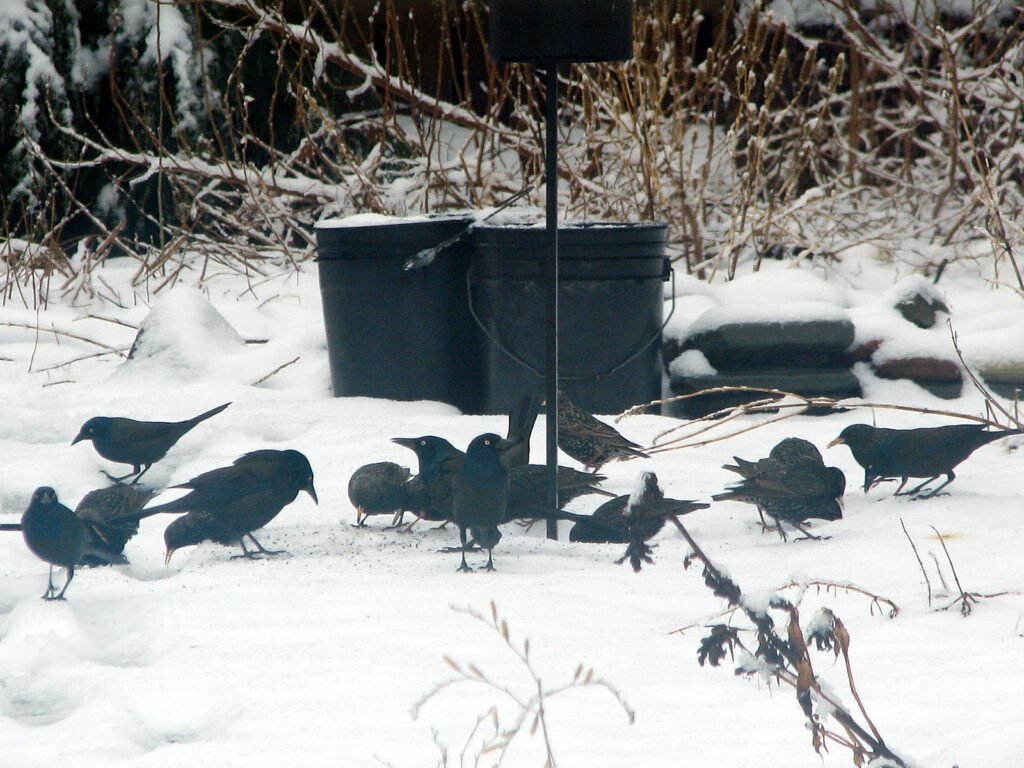
Fortunately we generally don’t have so many at once, though even one is more than enough.
Starlings seem to have become more common, currently outnumbering house sparrows. They’re the reason I can’t easily put suet out for the woodpeckers I enjoy having or seeds for other birds.
They also compete for nesting areas with our native birds, and generally are unpleasant to have around.
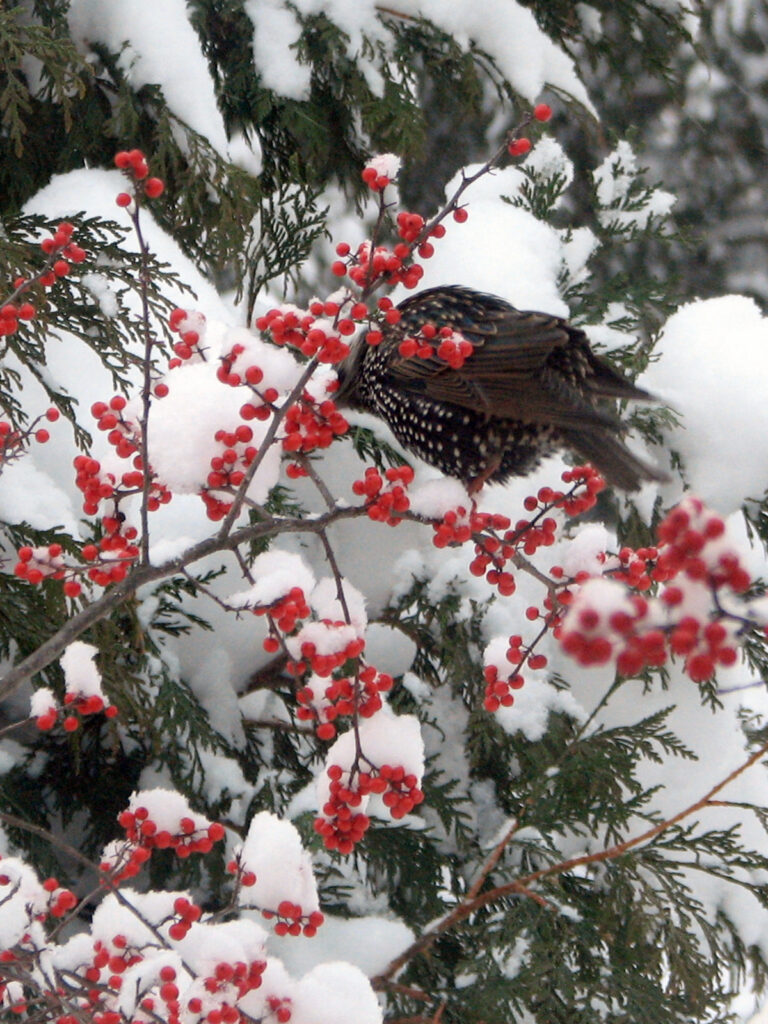
This starling is eating the winterberries that our robins and Northern mockingbird rely on to help them get through the long winter.
Resources
- Cornell Lab of Ornithology:
- SUNY-ESF:
- VIDEO: House sparrows – a nice 2-min. video
- Nature Conservancy’s Cool Green Science:
Reflections
The problem for nest-box monitors—and native birds—is that House Sparrows also breed in nest boxes, and their small 6 1/4-inch frame can easily fit inside a box intended for native songbirds. Male House Sparrows that defend territories early in the season often prevent later-arriving migratory species from nesting. They aggressively defend nest boxes, sometimes evicting other species that attempt to nest in their territory, destroying eggs, killing nestlings, or killing females that are incubating eggs. House Sparrows are also prolific breeders, able to raise up to four broods per season, with each brood averaging between four and five eggs.
~ Cornell Lab of Ornithology, The Trouble with House Sparrows
